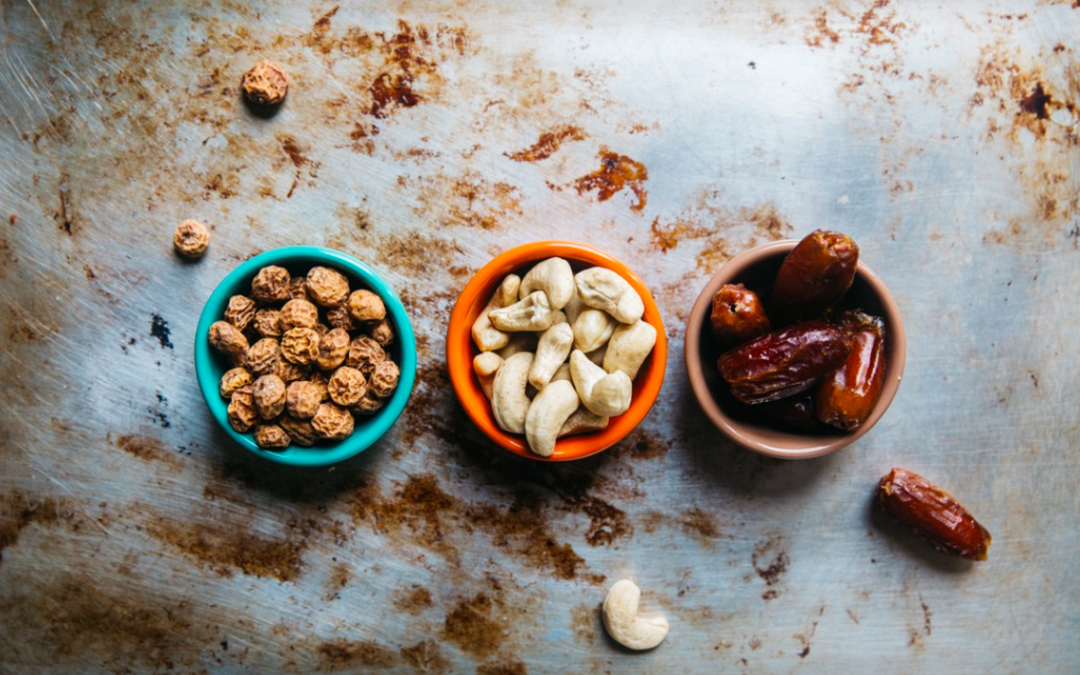
by Lucy | Dec 3, 2016 | Motivational Mondays
Monday, December 5, 2016
I have an awesome job. I get to sit and talk to healthy people every day, learn about their strategies and hear their success stories. What I’ve learned is each of us has our own system and strategies to be healthy and well-balanced. We’ve talked about different diets such as Paleo, Atkins, and I have even referenced the military diet… Ice cream every day y’all! As you know, Kristen and I do not promote diets because we want you to have a lifestyle that is conducive to living well without restrictions. We believe in the Well-Balanced Plate.
Lately, I’ve heard a recurring message from family members and clients as they strive to eat well through the holiday season. First step… Cut out the fat. For many years fat has endured a bad reputation and not surprisingly, it’s a pretty complex macro nutrient. For example, 1 g of fat has 9 calories versus 1 g of protein or carbohydrate has 4 calories. That means foods with fat are more energy dense.
Recently, I came across an article, Sugar and heart disease: The sour side of industry funded research. I felt empowered and frustrated while reading about how the Sugar Research Foundation paid the scientists and doctors doing the research to detract attention from any evidence linking sugar and coronary heart disease.
What we know now: Fat is our friend.
How fat is our friend:
- Makes food tastier
- It fill us up
- Keep us full longer
- Helps us absorb other nutrients such as fat-soluble vitamins.
About a year ago, I got really frustrated with my sugar cravings and talked about it with my good friend and fellow dietitian, Brenna Thompson. She helped shine light on the benefits of incorporating more fat (and protein!), which essentially makes less room for my body to crave sugar. I changed my diet gradually over the past year and typically include at least 1 to 2 tablespoons of fat with most meals. Not surprisingly, breakfast includes peanut butter or almond butter, at lunch I usually have salad dressing or mayonnaise (not necessarily the healthiest choice). I typically cook with olive oil or butter on my vegetables at dinner. When I first made this change I was genuinely upset after finishing dinner and realizing I was so satisfied and did not have any room for the chocolate or other sweets I typically indulged in after a meal.
Food for thought:
As we are surrounded by sweets, treats and goodies this holiday season I wonder if you will make fat your friend too? If you’re struggling with cravings, I suggest a tablespoon of peanut butter or handful of almonds.
What’s one way you can add, our friend, fat into your diet?___________________________________________

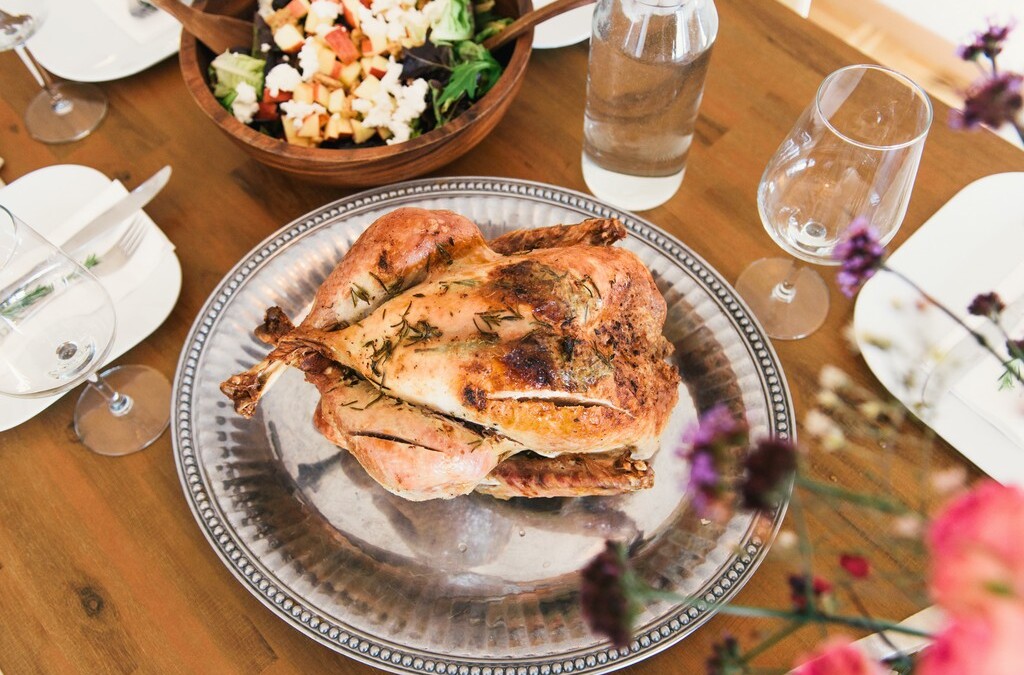
by Lucy | Nov 16, 2016 | Well Balanced Wisdom
Awh..the season for feasting is here. There is a good chance you will be eating some turkey, gravy, rolls, stuffing and all the things to go along with it soon. YUM!! Who is excited for the yummy food?! (Me!) I could go on about how to be mindful, eat a well-balanced turkey dinner, avoid overeating but let’s face it…. Thanksgiving is about celebrating our food! Dare I say it but… I think it’s okay to overindulge a bit at your Thanksgiving meal.
Perhaps the most important thing is what you do afterward. Here’s what I plan to do after the feasting is done.
- Get outside and move! One year I did a turkey trot walk/run the morning of Thanksgiving. Another year my family walked around Duke’s campus after eating our meal. This year I’m gonna #OptOutside! Will you join me? Let’s say no to the long lines and madness of shopping and say yes to nature!! We’ll be posting pictures of us opting outside on our Facebook page. We wanna see your nature selfies too! Post them with the hashtag #OptOuside and #wellbalancednutrition
- Go green! Leftovers are awesome. We will likely have plenty of turkey, mashed potatoes, rolls and pie left after it’s all said and done! It’s really easy to over-do it if we don’t balance them out with some fruits and veggies. I am planning to buy a variety of greens and fruit to eat alongside the remaining foods from the turkey day spread.
- Eat breakfast. When you overeat a bit on Thanksgiving, skipping breakfast that morning or the next day may seem like a reasonable thing to do but it’s not wise. I will keep my metabolism going with a small and healthy morning meal such as eggs and fruit.
There you have it, folks! Those are my plans. What will you do? Comment below and let us know or let us know on Facebook.
Have a wonderful Thanksgiving Ya’ll!!
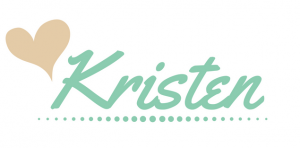

by Lucy | Oct 4, 2016 | Well Balanced Wisdom
Do you know about this SIMPLE way of improving your overall well-being? There is one medicine that when taken regularly is proven to…
- Be an effective antidepressant in mild to moderate cases of depression
- Protect an aging brain against memory loss and dementia
- Defend your heart against heart disease and stroke
- Lower your bad (LDL) cholesterol while increasing good (HDL) cholesterol
- Keep your blood pressure in check
- Slash your risk of diabetes, asthma and some cancers
- Increase bone density and help prevent osteoporosis
- Support Vitamin D levels
- Boost your circulation and increase oxygen supply to the brain
- Increase muscle mass and tone
- Burn more calories
Now you might expect this medicine to cost you a fortune. I hate to tell you this but insurance does not cover it at this time. Lucky for you and me… this medicine doesn’t cost a thing.
 So what is this medicine?
So what is this medicine?
Walking. That’s right. The simple act of putting one foot in front of the other is proven to improve our well-being in many, many ways. All those benefits sound great, right!? So, why aren’t we all hitting the pavement more often? Although it requires no equipment or gym membership, walking just isn’t as easy as swallowing a pill. It takes a little more effort. That’s why I am sharing Peggy’s story with you today.
For her, walking went from a chore to “I can do more!’
Peggy was noticing that her weight was starting to creep up and results from a recent doctor’s visit prompted her to think about incorporating exercise into her days. She had tried going to the gym, taking group exercise classes, and doing exercise at home on her own. Nothing seemed to stick. She knew that exercise would help her cut back on medications, but it was always such a chore.
Then she made it a goal to walk one mile outdoors most days of the week. Sometimes she would think to herself, ‘if I can’t walk a mile, I might as well not walk at all.’ She didn’t realize it then, but this was a limiting belief that was getting in her way. One day she had a “lightbulb moment” when she read this quote: “It doesn’t matter how slow you go, as long as you do not stop.” It was then that she realized if she were to make walking a regular habit, she would need to do it nearly every day, even if her walk was short. She started walking 15 minutes at first and built her way up to 30-40 minutes most days of the week. Ten weeks later, walking is part of her routine, and she doesn’t feel right without her morning stroll.
 “The first 2 weeks were the hardest. It wasn’t easy to get out there and get going. But once I started walking, I would feel the benefits and that motivated me to continue. Some days, I surprise myself. I’ll get out there for a short walk but then I end up going further then I planned! So to others I would say, “It’s okay to start small.” Just get out and be consistent.“ – Peggy Cole
“The first 2 weeks were the hardest. It wasn’t easy to get out there and get going. But once I started walking, I would feel the benefits and that motivated me to continue. Some days, I surprise myself. I’ll get out there for a short walk but then I end up going further then I planned! So to others I would say, “It’s okay to start small.” Just get out and be consistent.“ – Peggy Cole
Food for Thought
The moral of her story is this: You need to build momentum to make a new habit stick. The only way to build momentum is to get out there and go – no matter how slow, how short or how sloppy the result. Simply get out there consistently. Once you’ve done it a few times, you’ll feel motivated to keep going and before you know it you’ve built a habit.
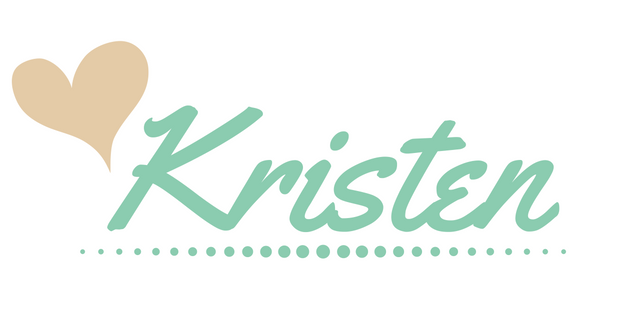
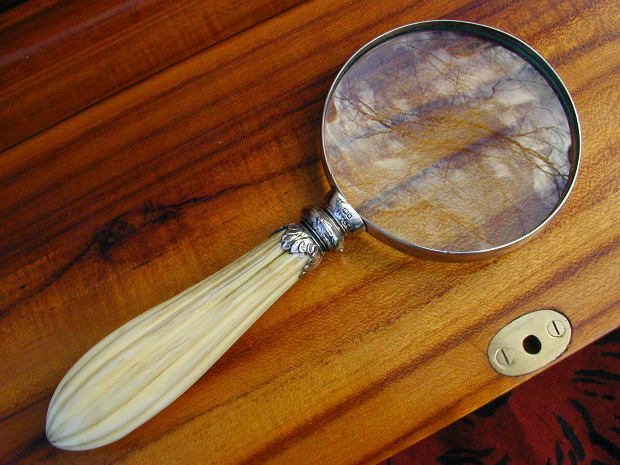
by Lucy | Sep 7, 2016 | Well Balanced Wisdom
Last week I talked about gathering DATA when you start to have a craving. Did you try it? What’d you discover? If you didn’t get the chance to try it I want you to keep the idea in your back pocket so you’ll have it in case you need it! This week I want to elaborate on what you can do when you assess the situation and you find that you’re craving is really just a desire for something else. I want to share with you my personal experience with the “DATA” technique and then tell you about one of my favorite things to do next.
The discovery I made during my first WHOLE30…
I’ve always known that procrastination is a problem of mine but I never realized it was associated with what I choose to eat. It wasn’t until the whole30 that I started to pay attention to my food choices more closely than ever before. I knew that I craved chocolate at night. We all have a sweet tooth, right? I mean I come from a long line of chocoholics. Don’t most women? But I never really thought much about my cravings. It was just something that I accepted. I love chocolate. Period.
I discovered so much more. It wasn’t until I was in the midst of a whole30 adventure that I had this AHA moment. One of those…well, that was so obvious why didn’t I notice that before kind of moments.
Because I couldn’t just REACT and give in to my cravings, I was able to stop and bring light to what was behind them. I noticed that they would usually be around 8pm when the kids were finally in bed. Exhausted from the day, nothing sounded better than vegging out or grabbing a treat from the kitchen. I go to the kitchen and glance over at the sink full of the days dirty dishes, stacks of mail on the counter and a house full of toys cluttering the floor. Eek!
Diversion! Quick, I need a diversion! I’ll get a snack first before I tackle these messes. That’s the first thing my unconscious mind would say. Ahh..procrastination rears its ugly head. I was using food to procrastinate. Not cool.
But it was more than just procrastination. I would also be overwhelmed with guilt. Guilt for not having any desire to keep my house clean or keep up with chores. I should. I really should be a good housekeeper, wife, mom and just clean up so I can wake up to a nice and tidy home. But I really, really don’t want to! That was my inner dialogue. It was like a parent asking a child to do a simple task and a child throwing herself on the ground, wailing and whining about how much she doesn’t want to do what you’ve just asked. It was a true inner struggle. I know that I should be doing something productive and I felt so lazy for not wanting to do it.
Ha. And to think that until I was in the thick of my first whole30 experience I never thought twice about the reasons I craved chocolate. I just thought I craved it because it was delicious. But I can be really good at ignoring my feelings. It seems so simple in theory but actually realizing, naming and shining more light on your feelings is a true discipline. Mindfulness if you will.
Luckily at this same time I made this discovery, I was also reading the book Eating with Fierce Kindness, which is amazing by the way. Sasha T Loring calls us all to be our own friend and stop thinking so badly of ourselves. Let’s get rid of all the guilt and instead show ourselves a lot more compassion. So, I’ve been working on allowing myself time to rest at the end of the day if I need it and also trying to tackle chores before they get so out of hand and overwhelming. It’s a work in progress. And yes, I still love chocolate but I try to enjoy it when the time is right. Not to cover up some crazy feelings. Also, a work in progress.
Once you make your own discovery it helps to get curious about it. Here is my favorite way to think about and sort through what’s behind a craving. I write out a Shitty First Draft or SFD. It’s exactly what it sounds like. It’s a chance to simply write out what’s on your mind without any judgments or hesitation. Anne Lamott, the gal behind the SFD concept, says “just let it all pour out and then let it romp all over the place, knowing that no one is going to see it and that you can shape it later….just get it all down on paper.”
Anne’s advice is geared toward writers but Brene Brown, one of my favorite authors, encourages everyone to create a SFD in regular everyday moments. She calls us to question the stories we make up in our heads and to be curious about our emotions. In her SFDs she writes out these 6 things and then fills in the blanks:
- The story I’m making up is.. (watch Brene talk about this more)
- My emotions..
- My body..
- My thinking..
- My beliefs…
- My actions…
Use this tool in addition to the DATA technique and to help you sort through those things that lie behind the cravings. I wonder what discoveries you might make? Next time you are experiencing a craving or even just feeling uncomfortable and vunerable give these two techniques a try.

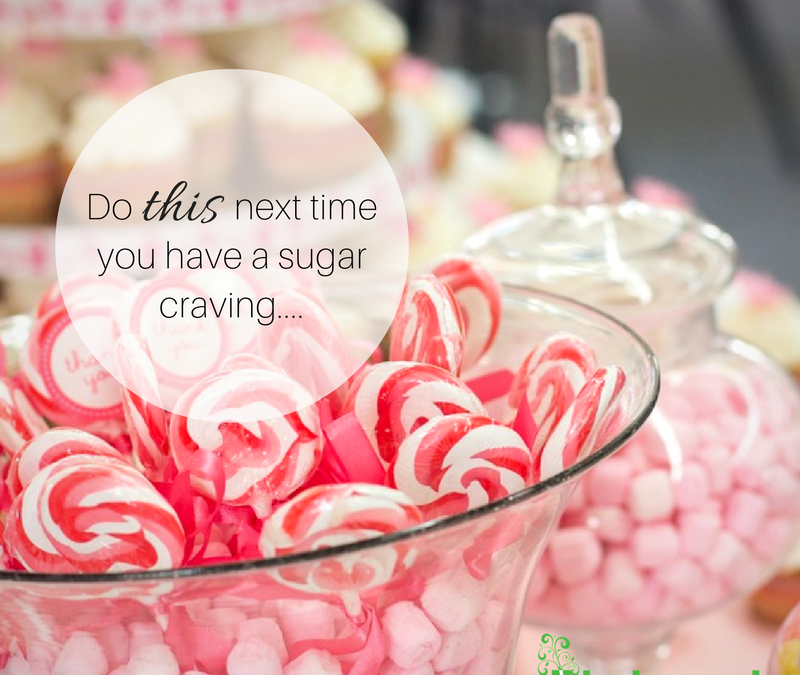
by Lucy | Sep 1, 2016 | Well Balanced Wisdom
Last week I talked about treating yourself when the time is right. Today, I follow up on something I mentioned at the end of that blog. I said that I didn’t want to struggle with the sugar dragon every night, aka my sweet tooth. Well, my friends, this is something I am still working on, but I have a secret weapon. I invite you to use this awesome mindful eating tool that can help you manage your cravings. I will also share some strategies that have helped me cut out a lot of sugar.
What Causes Cravings for Sweets?
Many things can trigger cravings. It can be a result of an unbalanced diet. For example, not eating an adequate amount of protein or fat at meals can result in late night snacking. Lucy talks about this in her account of how she broke up with sugar here. Cravings can also be habitually or emotionally driven.
Here we will discuss the habitual and emotional drivers of cravings and share a mindful eating tool for keeping cravings in check. Sugar cravings can be fierce and unrelenting, that’s why I like to refer to my sweet tooth as the sugar dragon. It creeps in your head and demands sweets. It breathes down your neck until it gets something yummy and sweet.
Think about the times your cravings usually occur. Cravings hit when you’ve sat at a desk way too long. Maybe they come when you are alone and bored on the weekends or when you are frustrated, stuck, or exhausted at the end of the day.
We may not recognize these feelings at first, but when the sugar dragon pops up it’s often because something is going on underneath the surface, making us feel vulnerable or uncomfortable. Cravings hit during the times when we feel bored, lonely, tired or vulnerable. In an effort to protect ourselves, our brain will try to divert us from those uncomfortable feelings.
Sugary treats are often readily available at any turn, easy to obtain, only take a minute or two to eat, and they make us feel good almost immediately (although only momentarily). No wonder turning to sugar in one form or the other is a natural habit to pick up. It feels so good that our brain decides we should do that more often. The only trouble is using sugar as a solution isn’t going to help you in the long run.
How do you manage or stop cravings?
To conquer cravings and formed habits, we must retrain our brain. Breaking the habit and fighting the cravings takes awareness and intention. The mindfulness tool below will help you with those two things. Next time the sugar dragon taunts you, instead of immediately complying take a moment to stop and gather some DATA (Describe, Accept, Time, and Assess)…
- Describe the moment to yourself. Where are you? What are you doing? What just happened? What are you feeling? What do you need? What are you thinking? What story are you telling yourself?
- Accept it all for what it is and sit with any discomfort. When doing this, treat yourself like you would your best friend. That means no shaming, blaming, or demeaning yourself for anything. Know that it is okay to be feeling this emotion and show yourself compassion.
- Take time to turn away from the craving and if uncomfortable feelings are under the surface think about what you truly need to process those. You could journal your thoughts, do some coloring, go on a walk, call a friend, tidy up a room, pray or meditate. You can come back to the craving in 10-20 minutes.
- After taking time away, you can now assess your craving and make a deliberate decision rather than an impulsive one. You might still choose to eat something, or you might notice that whatever you did to turn away from the craving lessened the desire to fix the problem with sweets. Perhaps you realize you simply need some sleep, to talk through your feelings, to show yourself some compassion or choose a non-food way to self-soothe.
My challenge to you is to try this tool this week. I’ve done this exercise a few times throughout both of my whole30 experiences and continue to use it when cravings arise. I’ve learned a lot from pausing before reacting. Let me know how it goes for you and what you learn from implementing this mindfulness tool for managing sugar cravings.
What other ways can you stop sugar cravings?
Here are five other ideas to help you cut back on sweets and sugar.
- Be sure you are getting enough protein and healthy fats at each meal.
- Include fruit in your meal so you can end on a naturally sweet note
- Drink a tall glass of ice water perhaps with lemon or a chilled glass of coconut water. Sometimes hydration can ward off a sweet tooth.
- Brush your teeth. Often times, we crave sweet food because we can still taste our dinner. A clean mouth feels excellent and can signal that you are done eating.
- Don’t keep desserts in the house or at eye-sight, especially if you are an abstainer – read more about this in Are you an abstainer or moderator?


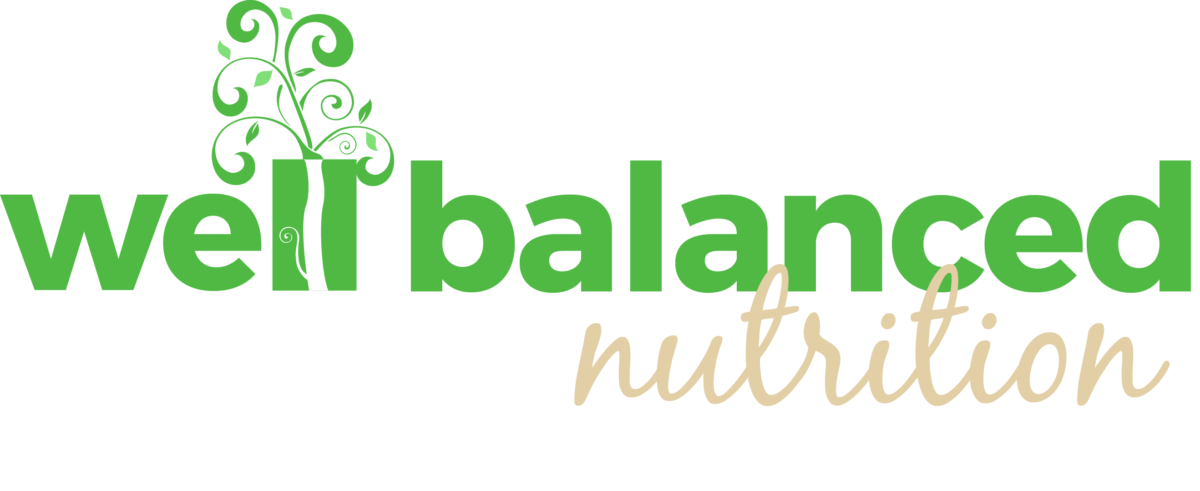



 So what is this medicine?
So what is this medicine? “The first 2 weeks were the hardest. It wasn’t easy to get out there and get going. But once I started walking, I would feel the benefits and that motivated me to continue. Some days, I surprise myself. I’ll get out there for a short walk but then I end up going further then I planned! So to others I would say, “It’s okay to start small.” Just get out and
“The first 2 weeks were the hardest. It wasn’t easy to get out there and get going. But once I started walking, I would feel the benefits and that motivated me to continue. Some days, I surprise myself. I’ll get out there for a short walk but then I end up going further then I planned! So to others I would say, “It’s okay to start small.” Just get out and 

